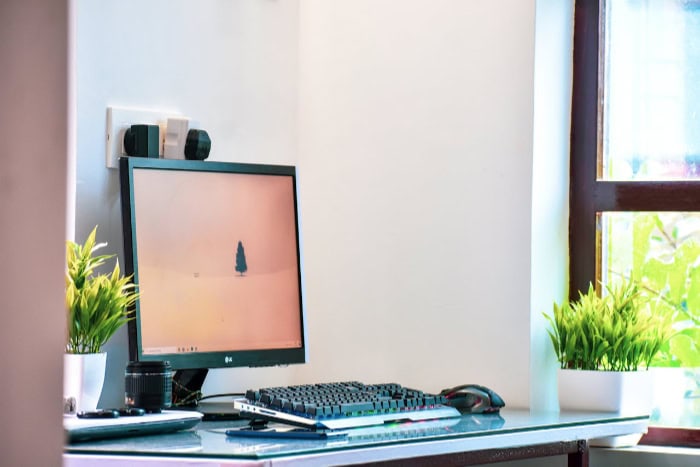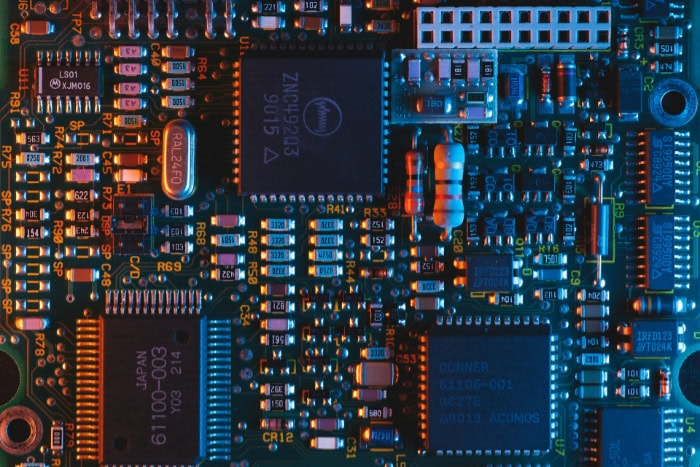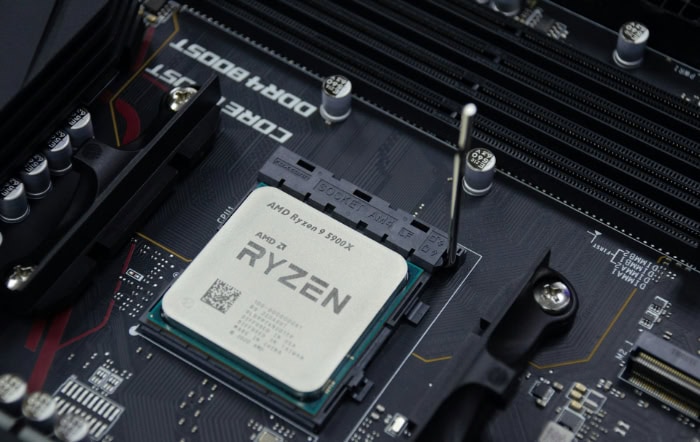How Do Computers Work? Explained in Simple Terms

Every time you turn on your computer, click a link, or run an application, a series of incredibly intricate processes unfold behind the scenes. Computers are often seen as magical boxes capable of performing countless tasks, but their operation is rooted in logical, structured systems that follow precise rules.
At the heart of these machines lies an interplay between hardware and software, each playing a critical role in transforming your inputs into useful outputs. Whether it’s loading a webpage or running a complex simulation, these devices rely on a harmonious balance of components working together.
Core Components of a Computer
Computers might seem like a single unit, but they are made up of several essential components working together to perform tasks. The core elements of a computer include the Central Processing Unit (CPU), memory (both RAM and storage), and input/output devices.
Each of these plays a unique role in ensuring that the computer functions properly.
Central Processing Unit (CPU)
The Central Processing Unit (CPU) is often referred to as the brain of the computer. It is responsible for executing instructions and managing the flow of information throughout the system.
The CPU operates by following a structured process known as the fetch-decode-execute cycle.
In the fetch phase, the CPU retrieves an instruction from the computer’s memory. This instruction is typically stored in a program, such as an application or the operating system.
Once fetched, the instruction moves into the decode phase, where the CPU interprets what the instruction is asking it to do. Finally, during the execute phase, the CPU carries out the instruction, which could involve performing a calculation, moving data, or interacting with other hardware components.
This cycle happens incredibly fast—millions or even billions of times per second—allowing the CPU to handle multiple tasks at once.
Modern CPUs are equipped with multiple cores, which can execute different instructions simultaneously, further increasing the processing power.
Memory (RAM and Storage)
Memory is essential for a computer to store and retrieve data efficiently. However, not all memory in a computer serves the same purpose.
RAM (Random Access Memory) and storage are the two main types of memory that play distinct roles.
RAM is a form of temporary, or volatile, memory. It acts as a workspace for the CPU, storing data that is currently being used or processed.
Since RAM is much faster than long-term storage, it allows the CPU to access information quickly. However, the data in RAM is lost once the computer is turned off.
This is why files need to be saved to long-term storage before shutting down a system.
Storage, on the other hand, is non-volatile, meaning it retains data even when the computer is powered off. This includes hard drives (HDDs) and solid-state drives (SSDs), which store operating systems, applications, and personal files.
While storage is slower compared to RAM, it is essential for keeping data over the long term. Modern computers often use SSDs, which are faster and more durable than traditional HDDs, significantly improving overall system performance.
The interaction between RAM and storage is crucial to the computer’s performance. When you open an application, the data is loaded from storage into RAM, allowing the CPU to access it quickly.
Once you save your work or close the application, the data is written back to storage.
Input/Output Devices
Input and output (I/O) devices are the components that allow users to interact with the computer and receive feedback from it. Input devices are used to send data to the computer, while output devices display or present the results of the computer’s processes.
Common input devices include keyboards, mice, and touchscreens. These devices allow users to give instructions to the computer, whether it’s typing commands, moving the cursor, or selecting options on a screen.
More advanced input devices such as microphones and cameras are also widely used, allowing for voice commands and video recording.
Output devices include monitors, printers, and speakers. A monitor displays the graphical output of the computer, allowing users to see the results of their actions in real-time.
Printers produce physical copies of digital documents, while speakers output sound, enhancing the multimedia experience.
The interaction between input and output devices is what makes a computer a practical tool. For example, when you type a document using a keyboard (input device), the text appears on the monitor (output device).
Similarly, clicking on a file with a mouse (input device) opens the file in an application, and the result is displayed on the screen (output).
Data Processing: From Input to Output

The core function of a computer is to process data, converting user inputs into meaningful outputs. At the heart of this process is a series of precise operations that rely on fundamental principles of mathematics and logic.
Computers handle data in a format they can understand—binary code—using circuits and logic gates to perform calculations. The CPU then executes instructions in a systematic way to deliver the results we see on our screens or print on paper.
Binary System
To handle any form of data, computers use the binary system, which consists of two values: 0 and 1. While humans typically use the decimal system (which has ten digits), computers rely on binary because it simplifies the physical design of the electronic circuits that make up a computer’s hardware.
Each 0 or 1 in binary is known as a bit, and strings of these bits are combined to represent more complex information, such as numbers, text, images, or sound.
For example, the number 5 in the decimal system is represented as 101 in binary. Similarly, each letter in the alphabet has its own binary code.
When you press a key on the keyboard, the computer doesn’t “see” the letter itself but rather its binary representation, which it processes and stores in memory.
Binary is essential because computers operate using electronic signals, which have two states: on and off. These states are naturally represented by 1s and 0s in binary.
All data is eventually broken down into these binary sequences, which the computer can then manipulate through its hardware and software.
Logic Gates and Circuits
Once data is represented in binary, it needs to be processed, and this is where logic gates and circuits come into play. Logic gates are the building blocks of digital circuits, and they perform basic logical operations on binary data.
The three fundamental types of logic gates are AND, OR, and NOT gates.
- AND Gate: Outputs 1 only if both input values are 1; otherwise, it outputs 0.
- OR Gate: Outputs 1 if at least one input value is 1; otherwise, it outputs 0.
- NOT Gate: Inverts the input, outputting 1 if the input is 0 and vice versa.
These gates are combined in various ways to create circuits that can perform more complex operations, such as addition, subtraction, or even decision-making processes.
Multiple logic gates working together form combinational circuits, which process multiple inputs to generate an output based on the logic of the gates involved.
For example, an adder circuit can take two binary numbers and perform addition, outputting the binary equivalent of their sum.
As computers are tasked with more complex operations, these basic circuits are combined in highly intricate ways, allowing the system to perform everything from simple arithmetic to advanced graphics rendering.
Instruction Execution
The process of executing instructions in a computer involves the CPU, which is constantly processing data by following a set of pre-defined instructions. These instructions come in the form of machine code, which is a low-level programming language understood directly by the CPU.
Machine code is composed entirely of binary digits, making it perfectly suited for the binary architecture of computers.
When a program runs, it sends a series of machine code instructions to the CPU. Each instruction tells the CPU what operation to perform, such as adding two numbers, moving data from one location to another, or comparing values.
The CPU processes these instructions in stages through the fetch-decode-execute cycle.
- Fetch: The CPU retrieves the next instruction from memory.
- Decode: The CPU interprets what the instruction is asking it to do. This could involve an arithmetic operation, a data transfer, or a conditional check.
- Execute: The CPU carries out the instruction, which may involve interacting with other parts of the system, such as memory or input/output devices.
For example, if a user opens a word processor and types a letter, the CPU fetches the instructions from memory that correspond to displaying the letter on the screen.
It decodes these instructions, determines that the task involves displaying a character, and executes the task by interacting with the graphics card to render the letter on the monitor.
The CPU repeats this cycle millions or even billions of times per second, processing instructions in rapid succession to perform tasks efficiently.
Modern CPUs are capable of multithreading, which allows them to handle multiple instruction sets simultaneously. This enables computers to run several applications at once without slowing down.
Software: The Operating System and Applications

The hardware of a computer is responsible for the physical processing of information, but it’s the software that directs how those resources are used. Software is divided into two main categories: the operating system (OS) and applications.
The operating system is responsible for managing the computer’s hardware and providing a platform for applications to run. Applications are the programs that perform specific tasks for the user, such as word processing or browsing the internet.
Together, the OS and applications ensure that the computer can perform a wide range of functions efficiently.
Operating System (OS)
The operating system (OS) serves as the backbone of any computing environment, acting as a bridge between the hardware and the user. Its primary role is to manage hardware resources, such as the CPU, memory, and input/output devices.
Without an operating system, software applications would have no way of interacting with the hardware, leaving the computer essentially inoperable.
One of the core responsibilities of the OS is hardware management. When you open multiple programs, such as a web browser and a music player, the OS ensures that each application gets a fair share of the computer’s resources.
It does this by allocating memory and CPU time to each task, allowing them to function smoothly without interference. For example, when you’re watching a video while typing an email, the OS allocates resources dynamically to ensure both tasks run effectively.
Another critical function is memory management. The OS tracks which parts of the memory are being used and which are available.
It allocates memory to applications as they are launched and deallocates it when they close. This management prevents different programs from overwriting each other’s data and ensures that the system runs efficiently.
The OS also provides a user interface, which can be either graphical (like Windows or macOS) or command-line-based (like Linux). The user interface allows people to interact with the computer in a way that is accessible and easy to use.
Through this interface, users can open files, run applications, and control system settings without having to worry about the underlying complexity of hardware management.
In addition to managing hardware, the OS is also responsible for task management.
When you run multiple programs simultaneously, the OS uses a process called multitasking to switch between tasks quickly so that it appears as though they are running at the same time.
This seamless juggling of tasks is what makes modern computers so versatile and efficient.
Application Software
While the operating system provides the environment for everything to function, application software is designed to help users perform specific tasks. These are the programs that most people interact with daily, whether it’s creating a document, editing a photo, or browsing the web.
Common examples of application software include word processors like Microsoft Word or Google Docs, which allow users to write, format, and edit text documents.
Web browsers such as Google Chrome or Firefox are another type of application software, allowing users to access, navigate, and interact with websites across the internet.
Applications rely on the operating system to perform their functions. For example, when you save a document in a word processor, the application sends a request to the OS to write the data to storage.
The operating system then communicates with the storage hardware to save the file. Similarly, when you print a document, the application interacts with the OS, which then sends the correct instructions to the printer.
Each application has a specific purpose, and users can install a variety of applications based on their needs.
Some applications, like video editing software or spreadsheet programs, require more resources and rely heavily on the OS to manage memory and processing power, ensuring smooth performance.
Programming Languages
At the foundation of all software, whether it’s an operating system or an application, is code. This code is written using programming languages, which are tools that allow developers to instruct the computer on how to perform specific tasks.
There are many different programming languages, each with its strengths and purposes.
Languages like Python, Java, and C++ are designed to be human-readable, allowing developers to write instructions in a way that resembles natural language. These are known as high-level languages because they are far removed from the binary code that computers natively understand.
High-level languages make it easier for developers to write complex programs without worrying about the hardware specifics.
However, computers only understand machine code, which is a series of binary digits (1s and 0s). To bridge the gap between high-level languages and machine code, programs called compilers or interpreters are used.
A compiler takes the entire code written in a high-level language, translates it into machine code, and creates an executable file that the computer can run. Interpreters, on the other hand, translate and execute the code line by line, which is common in languages like Python.
For example, when a developer writes a program in Python, the Python interpreter converts the written code into machine code that the CPU can execute.
This allows the computer to perform the specific instructions encoded in the program, whether it’s calculating numbers, displaying text, or processing data.
Programming languages have evolved over the years to become more efficient and easier to use.
High-level languages allow for faster development and more complex software applications, while lower-level languages, like Assembly, provide more control over hardware but are more challenging to code in.
Ultimately, the translation process ensures that whatever language a developer uses, the computer can still execute the instructions in machine code.
Computer Networks and Communication

Computers rarely operate in isolation. Much of what we do on a daily basis—accessing websites, sending emails, or streaming media—requires computers to communicate with one another.
This communication happens through networks, which allow multiple computers to connect and share information. These networks, whether small or large, rely on a set of standardized protocols and devices that ensure data is transmitted efficiently and securely.
The foundation of modern computing lies not just in the individual machine but in the ability of these machines to interact with one another seamlessly through networks.
Networking Basics
A computer network is a collection of computers and devices linked together to share resources and information.
Networks can range in size from a Local Area Network (LAN), which might connect computers within a single household or office, to a Wide Area Network (WAN), which can span entire countries or even continents.
The internet is the most famous example of a WAN, connecting billions of devices around the world.
In a simple LAN setup, devices like computers, printers, and smartphones are connected to one another, typically through a central hub such as a router or switch. These devices allow data to travel back and forth between the computers and other peripherals.
For example, in an office environment, multiple computers can share a single printer or access the same set of files stored on a central server.
The role of network devices like routers and switches is essential to the functioning of these networks. A router manages traffic between different networks, such as your home network and the internet.
It directs data packets to their destination, ensuring they arrive at the correct device. Switches, on the other hand, operate within a single network, connecting multiple devices and ensuring data is sent to the correct device within that network.
Without these devices, communication between computers would be inefficient and prone to errors.
Internet Protocols
To ensure that data is transmitted correctly across networks, computers rely on a set of rules known as internet protocols. These protocols define how data should be formatted, transmitted, and interpreted by the receiving device.
Two of the most important protocols used in networking are TCP/IP and HTTP.
TCP/IP (Transmission Control Protocol/Internet Protocol) is the foundational protocol suite of the internet. It works by breaking down data into small chunks called packets before they are sent over the network.
Each packet contains not only the data but also information about its destination, allowing it to reach the correct location. TCP ensures that the packets are reassembled in the correct order at the receiving end and checks for any errors that may have occurred during transmission.
If any packets are lost or corrupted, TCP will request their retransmission.
IP (Internet Protocol) is responsible for routing these packets across different networks. It assigns a unique address, known as an IP address, to each device on the network.
This address allows routers to identify where the data needs to go. For example, when you visit a website, your computer sends a request to the server hosting the site using its IP address, and the server responds with the data required to display the webpage.
HTTP (HyperText Transfer Protocol) is another crucial protocol, especially for web browsing. It governs how data is exchanged between a web server and a browser.
When you enter a URL into your browser, an HTTP request is sent to the server that hosts the website. The server then uses HTTP to send the requested webpage back to your browser, which displays it on your screen.
Without HTTP, web browsers and servers would not be able to communicate effectively.
These protocols work together to ensure that data moves efficiently and securely across complex networks, allowing for everything from browsing the web to sending an email.
Data Transmission
At a fundamental level, data transmission over networks involves breaking down information into smaller units called packets and sending them from one device to another.
Each packet contains not just the data but also metadata, such as the sender’s and receiver’s IP addresses and information about how to reassemble the packets once they reach their destination.
When you send an email, for instance, the message is broken down into packets by your computer’s network protocol software. These packets are then sent across the network, potentially taking different routes to reach the recipient.
Once all the packets arrive, they are reassembled, and the email is displayed as a complete message.
The process of sending and receiving data is facilitated by servers. A server is a computer or program that provides services to other computers, known as clients, over a network.
Servers host websites, store files, or manage email communications. When you access a website, your computer acts as a client, sending a request to the server hosting the website.
The server processes the request and sends the necessary data back to your computer, which displays the content in your web browser.
The journey of data across networks may involve multiple servers and routers, especially when accessing data from far-flung locations.
For example, when you stream a video from a server located across the globe, the video data is transmitted through a series of routers and switches, ensuring that it reaches your device smoothly.
In general, data transmission relies on a combination of hardware (routers, switches, and servers) and software (protocols like TCP/IP) to ensure that information is delivered accurately, efficiently, and securely.
This intricate system enables modern communication, making it possible to send messages, share files, and access vast amounts of information with ease.
Problem Solving: Computational Thinking

Computers are powerful tools, but they only work as well as the instructions they are given. Problem-solving in computer science requires a structured approach, often referred to as computational thinking.
This method breaks down complex problems into manageable parts, applies algorithms to solve them, and uses abstraction to simplify systems.
Decomposition
The first step in solving a complex problem is decomposition—the process of breaking a large, complicated problem into smaller, more manageable parts. This approach allows for a clearer focus on individual components, making it easier to address each part systematically.
Decomposition is used in many areas of computing, from software development to network management.
For example, consider the task of creating a computer game. Instead of trying to build the entire game at once, developers break the project into smaller tasks: designing characters, developing the game’s physics engine, creating the user interface, and writing the code that controls player interactions.
By handling each of these smaller tasks separately, developers can focus on one piece of the puzzle without being overwhelmed by the complexity of the entire game.
In addition to making problems easier to solve, decomposition also helps teams collaborate. Each team member can work on a different part of the problem, and these parts can later be combined to form the final solution.
Whether it’s designing a website or building an operating system, decomposition is an essential step in managing complex challenges.
Algorithms
Once a problem is broken down, the next step is to design a solution—usually in the form of an algorithm. An algorithm is a set of step-by-step instructions for solving a problem or performing a task.
In computing, algorithms are used for everything from simple arithmetic to complex data processing.
A common example of an algorithm is a sorting algorithm, which arranges data in a specific order. One of the most well-known sorting algorithms is bubble sort, which works by repeatedly comparing adjacent elements in a list and swapping them if they are in the wrong order.
This process continues until the entire list is sorted. While bubble sort is simple, other more advanced algorithms like merge sort or quick sort are faster and more efficient, especially when dealing with large datasets.
Another important category of algorithms is search algorithms, which are used to find specific data within a larger set. A basic example is linear search, where the computer checks each item in a list one by one until it finds the target.
A more efficient approach is binary search, which works on sorted lists by repeatedly dividing the search range in half, drastically reducing the number of comparisons needed.
The efficiency of an algorithm is measured by how quickly it can complete a task, especially as the size of the input grows.
Efficient algorithms are crucial in computing, as they save time and resources, especially when processing large amounts of data or handling complex tasks like encryption or data compression.
Abstraction
As problems grow in complexity, it becomes necessary to simplify systems without losing essential details—a process known as abstraction. Abstraction involves focusing on the most important aspects of a problem while ignoring less relevant details.
This makes it easier to manage complexity and develop efficient solutions.
For example, when designing a video streaming service, engineers don’t need to worry about how individual pixels are displayed on the screen.
Instead, they work at a higher level of abstraction, focusing on how the video file is transmitted from a server to a client, how playback controls function, and how to manage bandwidth efficiently.
The details of how the screen renders the video are handled by other layers of the system, such as the operating system or the graphics hardware, which are abstracted away.
Abstraction is also used in programming. High-level programming languages like Python or Java allow developers to write code without needing to deal with the low-level details of how the computer’s memory is managed or how the CPU processes instructions.
These lower-level operations are abstracted away, making it easier to focus on the logic of the program itself.
Conclusion
Computers are complex machines built from a combination of hardware, software, and intricate processes that work together to perform countless tasks every day.
From the CPU’s role in executing instructions to the use of memory for storing and retrieving data, each component plays a part in creating a seamless computing experience.
Software, including operating systems and applications, bridges the gap between the user and the hardware, while programming languages allow developers to create the tools we rely on. Networks enable computers to communicate globally, using protocols and devices to efficiently transmit data.
Finally, computational thinking through decomposition, algorithms, and abstraction helps solve problems in a structured way. By understanding these building blocks, it becomes clearer how computers process, store, and communicate information, making them indispensable tools in modern life.



